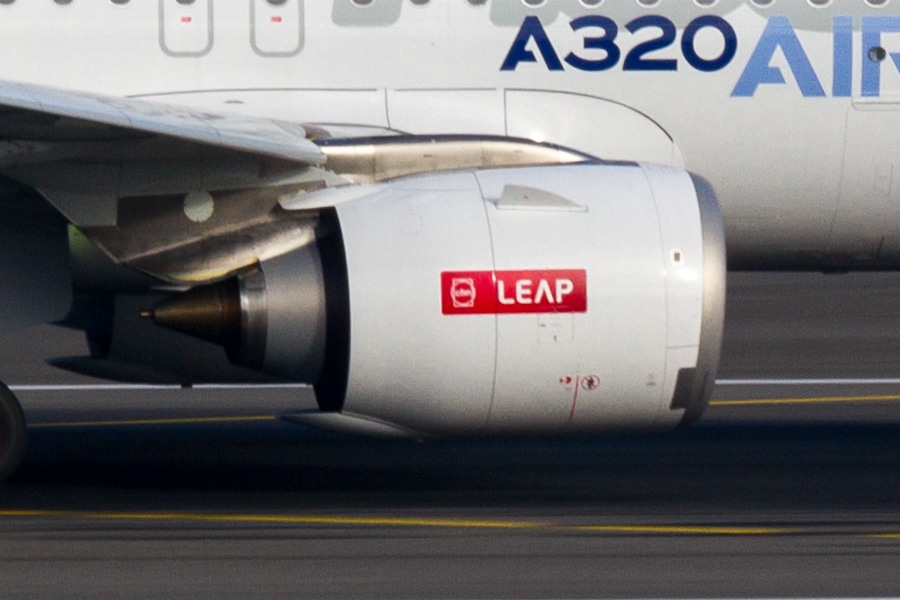Airlines
CFM says redesigning some LEAP jet engine parts

French-American jet engine producer CFM International announced on June 17 that it was modifying some components of its LEAP engine to increase durability in hostile environments, to be available for retrofit on Airbus and Boeing aircraft in next year.
It is the most recent example of how growing stress in regions like the Middle East and India has exacerbated a maintenance capacity constraint brought on by post-COVID labour shortages, particularly for CFM’s rival Pratt & Whitney.
Air India places record order for more than 800 LEAP engines(Opens in a new browser tab)
The company stated in a briefing before to the Paris Airshow that the action is CFM’s response to its investigation of high-pressure turbine blades and turbine nozzles when operating in severe and hot environments.
The Airbus A320neo family is powered by CFM, which also competes with Pratt & Whitney to power the Boeing 737 MAX. Analysts claim that all engines require some time to reach the longer intervals between maintenance visits promised to airlines, intended to lower repair costs, but Pratt & Whitney has received the most attention so far because it has the most out-of-service jets.
Indigo selects CFM engines to power its fleet of 310 new Airbus A320neo(Opens in a new browser tab)
CFM reported that engine utilisation had rebounded to 92% of pre-pandemic levels, and that manufacture of new LEAP engines would grow by 50% this year to 1,700 units.
CFM, which was established in the wake of a summit between the leaders of French and the United States that took place 50 years ago, announced that it was ready to begin ground and flight testing in the middle of the decade for its newest open-fan engine project, known as RISE, which is scheduled to be released in 2035. CFM officials claimed that the technology would reduce emissions by 20% and that it was being enhanced through access to supercomputers.

Airlines
Air India Rolls Out A350s for Delhi-New York JFK and Newark Routes

In a major development for North American travelers, Air India has announced the deployment of its state-of-the-art Airbus A350-900 aircraft on two key routes: Delhi to New York and Delhi to Newark.
The service on the Delhi-New York route will commence on November 1, 2024, while the Delhi-Newark route will see its inaugural flight on January 2, 2025.
The introduction of the air india a350 will bring significant enhancements to Air India’s offerings, particularly with the launch of its Premium Economy class. air india retrofit This new class will feature 24 wide seats arranged in a 2-4-2 configuration, providing passengers with extra legroom and a more comfortable flying experience.
Soon, Air India aircraft will feature onboard WiFi & all-new cabins: Click here
“We are encouraged by the positive guest feedback we have received from the domestic deployment of our air india a350 interior to offer our hero product on the Delhi-New York JFK and Delhi-Newark routes. This is a significant leap forward for our U.S. operations that also underscores our commitment to continuous improvement,” said Campbell Wilson, Chief Executive Officer & Managing Director of Air India.
The A350’s Business class will set new standards with 28 private suites, each equipped with full-flat beds, direct aisle access, and personal wardrobes. Economy class will be configured to accommodate 264 passengers in a 3-4-3 layout. Across all cabins, passengers will enjoy the latest Panasonic eX3 in-flight entertainment system, offering over 2,200 hours of content.
Air India’s First A350-900: Interior, Routes, &Inflight Features: Click here
This strategic deployment marks a notable enhancement in Air India’s U.S. operations, with 60% of its flights to the U.S. now featuring new or upgraded cabin interiors. The air india new international routes currently operates 51 weekly flights to five U.S. destinations: New York JFK, Newark, Washington DC, Chicago, and San Francisco.
The revamped cabins, advanced in-flight entertainment systems, and improved service standards represent air india wifi commitment to providing a superior travel experience. “We believe this enhanced offering will solidify Air India’s position as a leading carrier and attract travellers seeking a world-class flying experience between India and the United States,” the airline stated.
Seats on these flights are now available for booking on Air India’s website, mobile app, and through travel agents, ensuring that passengers can easily plan their journeys on these newly upgraded routes.
Air India Economy vs Qatar airways economy: which is best?:Click here
-

 Travel1 week ago
Travel1 week agoAir India to Expand US Operations with Three New Routes After a Decade
-

 Travel2 weeks ago
Travel2 weeks agoWhy We Should Avoid These Stamps in a Passport
-

 Airlines1 month ago
Airlines1 month agoInvestigations Reveal Fake Chinese Titanium in Boeing and Airbus Jets
-

 Tech4 weeks ago
Tech4 weeks agoChina’s CATL Plans 1,800-Mile Electric Plane Launch by 2027
-

 Airport3 days ago
Airport3 days agoTop 10 Largest Airports in the World by Size
-

 Aerospace4 weeks ago
Aerospace4 weeks agoChina’s Fighter Jets Turn Wings into Autonomous Drones
-

 Airlines4 days ago
Airlines4 days agoAir India Rolls Out A350s for Delhi-New York JFK and Newark Routes
-

 Defence3 weeks ago
Defence3 weeks agoBoeing Enhances Chinook with New Engines and Block II Upgrades at $96 Million







